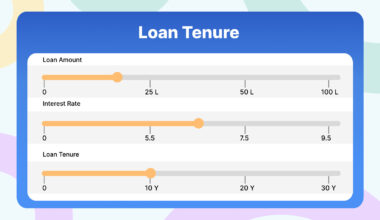Are you curious about the principles behind calculating interest on a loan or investment? Look no further. In this blog, we will explore the simple interest formula and how it can empower you to make informed financial decisions. Understanding the workings of the simple interest formula is crucial in determining the interest charged or earned throughout the duration of a loan or investment. By delving into the details of this formula, we will equip you with the knowledge and tools to effortlessly calculate your total debt or return.
What Is the Formula for Simple Interest?
The simple interest is determined by multiplying the principal amount of the loan or deposit, the rate of interest, and the total time frame. So, the simple interest formula will be –
I = P*R*T
Where:
- P is the principal amount
- R is the rate of interest applied by the bank or financial institution during the period.
- T is the tenure/total time.
Generally, the simple interest is provided in the percentage form. So, the formula will be:
I = (P*R*T)/100
Here is a simple interest formula example –
A person has borrowed a loan amount of ₹10,000 at a 6.5% interest rate from the bank. The total time for repaying the loan is 2 years. The inputs for the simple interest calculation will be:
P = ₹10,000, R= 6.5%, and T= 2 years
So, the calculation will be –
I = (10000* 6.5*2)/100
= ₹1300
So, the interest accumulation for this loan is ₹1300.
The person should pay this interest along with the principal amount to repay the loan.
So, his repayment amount will be the summation of the principal loan amount and the simple interest accumulation. That means he should pay (₹10,000 + ₹1300) = ₹11,300 to the lender.
What Is a Simple Interest Calculator?
The manual calculation of simple interest calculation can be error-prone. Thus, the lenders provide digitised simple interest calculators to generate accurate and error-free results. It provides a user-friendly interface for calculating simple interest efficiently. To use this calculator, the user should enter valid inputs, such as the principal amount, interest rate, and tenure. It will generate the result within a few seconds.
So, the online calculator has the following benefits:
- It provides accurate results, eliminating the requirement of manual simple interest calculation with the paper and pen method. So, no more wrong financial decisions due to wrong results.
- The calculator automates the calculation process. Thus, the users don’t need to put any formula to work and wait for the output. So, it is a time-saving method for the end-users.
How Do You Calculate Simple Interest Online Using a Calculator?
- Go to the financial institution’s website and locate simple interest formula calculator.
- Fill in the required field like the principal amount, rate of interest, tenure, etc
- Lastly, click on ‘Calculate’ to get the simple interest calculation
How to Use Paytm Simple Interest Calculator?
- Begin by visiting the official Paytm website, following the on-screen instructions.
- Scroll down the page until you find the section labeled ‘Financial Tools & Calculators.’ If you prefer, you can also use the website’s search function to locate it.
- Click on ‘Financial Tools & Calculators’ to access the available tools.
- Inside this section, select ‘Simple Interest Calculator’ from the options provided.
- On the subsequent page, you’ll find the user-friendly calculator that allows you to easily calculate your simple interest for the specified period.
In conclusion
The simple interest formula and calculator are valuable tools for quickly and accurately calculating the amount of interest earned or paid on a loan or investment. By using the formula I = P * R * T and inputting the variables into the calculator, individuals can make informed financial decisions and manage their finances effectively.






